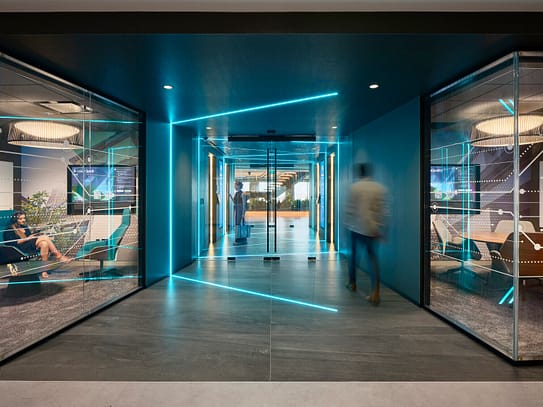Watts New: Things Have Changed
By Gary Bouthillette, AIA, NCARB, LC
Senior Director of Lighting
The drive for sustainability is impacting every aspect of the built environment creating exciting challenges and innovations. Not least among those aspects is lighting design which must creatively meet stringent building codes that limit the use of watts (W), the unit that measures the energy used by a light source. For code compliance, the key metric used to achieve energy limits is Lighting Power Density (LPD), measured in watts per square foot.
Although compliance with building codes and sustainability programs such as LEED have long been the main drivers for lowering a project's LPD, there is a new factor. Some clients and building owners in their drive for sustainability have recently introduced their own more stringent standards for maximum LPD. As a result, we have been asked to deliver workplace projects with an LPD as low as 0.45 W per square foot, which is significantly lower than current aggressive codes.
Lighting Design for Compliance
Not surprisingly, navigating code requirements is a juggling act that correlates many factors to achieve optimum illumination, aesthetic goals, and meet code, all within budget. There is not a lot of room to play; it is tricky and begins with choosing the right path to realize compliance. There are at least three different compliance paths for workplace lighting: 1) whole building focus, 2) space-by-space focus, and 3) tailored method. Designers choose the one most advantageous for the project. Ninety percent of the time that is the space-by-space approach.

Zwift | Photography by Garrett Rowland
The Mechanics
The wattage usage of every light source in a design must be calculated and reconciled to the project’s square footage. The workplace today is lit primarily with LED lights, which is a plus because LED technology produces more light using fewer watts than traditional incandescent lights (that can no longer be manufactured or sold in the US as of August 2023). Nevertheless, when target LPDs are very ambitious, the design of compelling, illuminated spaces within the allowed wattage is challenging.
In addition, to meet code and plan for the life of a project or building the lifespan of an LED has to be considered. The usable lifespan of LED fixtures is often rated beyond 50,000 hours, lasting more than 11 years if used 12 hours a day. But an LED’s lumen output degrades with age.
With all this top of mind, the key is to use lighting watts judicially, creating engaging, optimally distributed illumination that makes people feel comfortable and engaged with the space they occupy. For that to happen, lighting has to be strategically designed and deployed where it matters most, for example, to illuminate art installations, environmental design statements, or brighten public areas.
This is where micro lighting—integrated lighting meticulously designed at a very detailed level—comes in. Not all spaces within a project need or necessarily benefit from the same level or quality of light (think bright reception vs. moodier lounge areas). Cove lighting is a simple example of micro lighting. It fully integrates with the architectural elements to create a contrast for greater visual impact with an economy of watts. To comply with code and ensure best wattage allocation, micro lighting is poised to play an increasingly important role in the future of lighting design.

Dropbox | Photography by Ruth Maria Murphy

Additional Factors Influencing Lighting Design
Other considerations affecting lighting design include color temperature and the Color Rendering Index (CRI). Color temperature is indicated by the Kelvin (K) temperature scale. A Kelvin rating denotes the coolness or warmth of the shade of white emitted by a light source. Think of the sun; in the morning and evening sunlight is more orange or pink. At mid-day, the sun gives off a cooler light that is white or light blue. Light sources lower on the Kelvin scale (from about 2400K to 3000K) are considered warm. The higher the value the cooler the light. In commercial spaces, the coolest color temperatures used might be 5000K or 6500K, though 4100K is more common.
One color temperature is not better than the other but will be more appropriate for different environments, applications, and aesthetic affects. Furthermore, finish palettes and color temperatures should always be paired: a warm finish palette paired with cool light does not work well, nor does a cool palette with a warm light.

Confidential Client | Photography by Andrea Calo

Collage Food Hall | Photography by Garrett Rowland
A CRI rating measures the ability of a light source to accurately reveal an object’s color. Sunlight shows the true color(s) of an object and has a CRI of 100, the benchmark for the index. Typical CRIs for LEDs are 80+ and 90+. Commercial applications that may require a 90+ CRI include museums, art galleries, retail outlets, and other instances where color rendition is critical. However, high CRI light sources often use more energy and may be more costly, so using 90+ CRI lighting everywhere may not always be feasible. Moreover, the CRI of a light source significantly influences a design because it impacts how finishes look. Light manipulates color, e.g., lighting can make a vivid surface look incredibly dull.
The contribution of lighting to create a powerful design cannot be overstated, especially because light and color affect how people feel in a space, influencing their emotions and affecting their wellbeing. To ensure the best outcomes as well as code compliance, lighting decisions need to be carefully understood, weighed, and finalized during the design phase. This is critical. The many factors involved in trying to make adjustments after a design has been determined can be difficult and expensive.
Recognizing the importance of lighting design has led us to create in-house lighting labs where our lighting experts test complex lighting designs prior to implementation. In these labs we can create mock-ups and scale models of proposed lighting scenarios; measure delivered light levels at different positions and heights; analyze energy use; determine cost-effectiveness; and achieve seemingly impossible lighting solutions given sustainability goals and tight budgets. Intrigued? More about that with a video tour to come in this series of posts on lighting. But first, next up we’ll take a look at lighting and emotion. Stay tuned!
Gary Bouthillette, AIA, NCARB, LC
Principal, Senior Director of Lighting
Contact Gary: g.bouthillette@interiorarchitects.com

